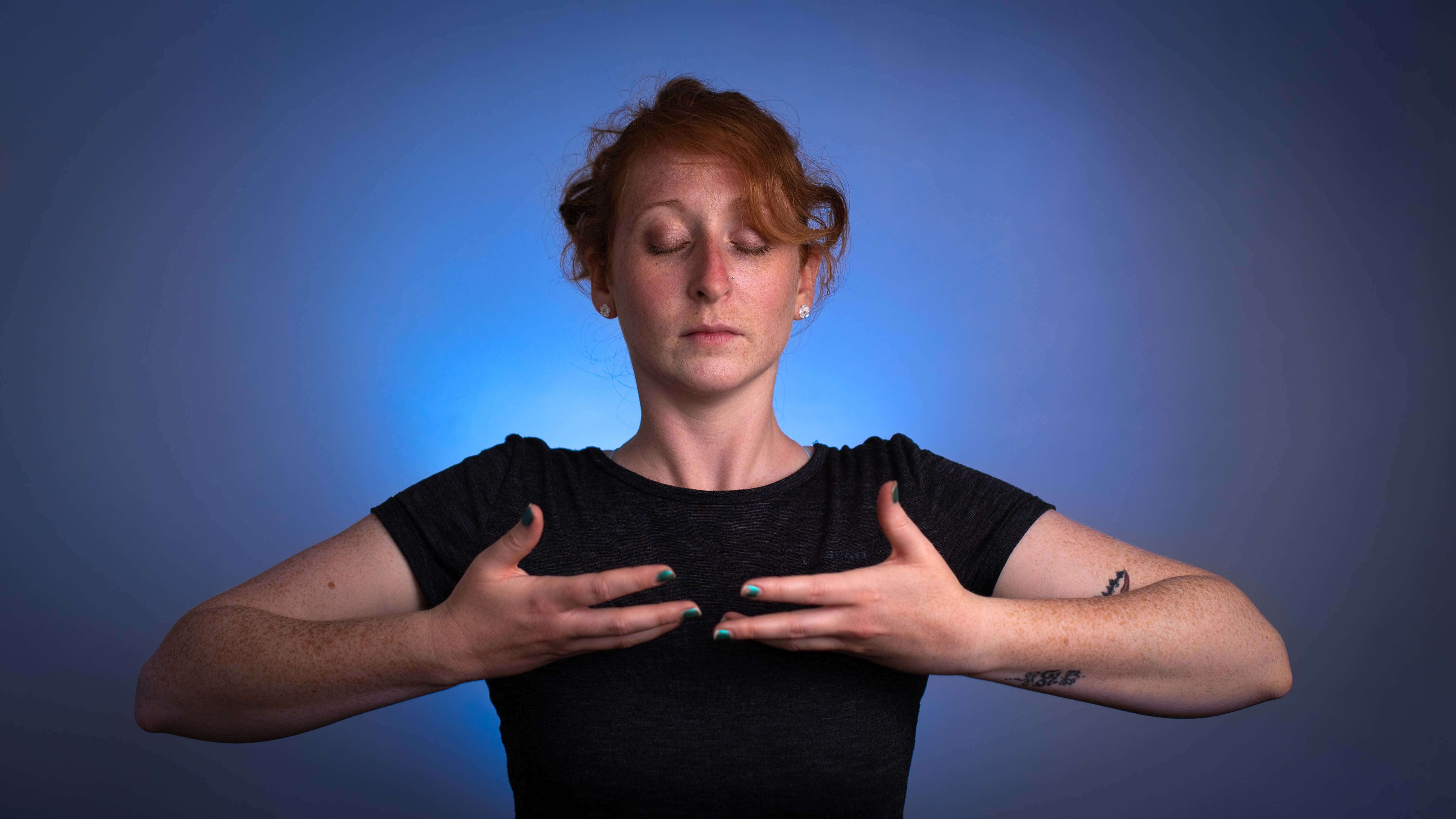
When you next feel yourself becoming tense, one of these breathing exercises for anxiety could help. Try one of these techniques to lessen your symptoms and bring the mind into a quieter place.
Our mind affects how we breathe and how we breathe can also affect the mind. When we feel anxious, our breath is short, shallow and tends to be in the chest. When we feel relaxed, our breath is deeper, longer and moves the abdomen. Think about how babies breathe. When babies are asleep, their breath moves their abdomen; the breath is flowing, full and easy. This is what we want to mimic to reduce our feelings and symptoms of anxiety. If our anxious thoughts can affect how we breathe then controlling our breath can have a positive effect on the mind.
- The best weighted blankets, to relieve anxiety and improve poor sleep
- Create a calming space with one of the best essential oil diffusers
- Rise and shine more naturally with one of the best wake-up lights
The five breathing techniques below drop us into our parasympathetic nervous system (PNS), our rest and digest function. When we feel anxious, we are in our sympathetic nervous system, our fight or flight response. If we can access our PNS when we are feeling anxious, it can help us to reduce our blood pressure and heart rate – two things that spike during anxiety or panic attacks.
These exercises can be practised sitting on a chair, on the floor or lying down. Ensure you have a straight spine so it's easier for your abdomen to move. If you are practising lying down, be aware that you may fall asleep so an upright position may be preferred. Please speak with your doctor before trying these breathing techniques if you suffer with any respiratory problems such as asthma.
1. Abdominal breathing

Abdominal breathing helps to calm the nervous system and relieves symptoms of anxiety by lowering your heart rate and blood pressure
Lightly rest your hands on your abdomen. When you breathe in, you want to feel your abdomen rise and gently press into your hands. As you breathe out, your abdomen wants to fall back towards your spine. This can take a while to get right so be patient with yourself. Make sure you are breathing in and out slowly, do not rush the breath. Practise breathing this way for a few minutes and feel your anxiety response decrease.
Abdominal breathing works by tensing and relaxing your diaphragm. As you breathe in, your diaphragm flattens and moves down. This forces your abdomen out. When you breathe out, your diaphragm relaxes and goes back up, meaning your abdomen can move back in. Connect to this movement of breath in your body to manage your anxiety.
- Feeling tense at work? These desk exercises will help
- ... or try this 10-minute yoga sequence for instant energy
2. Box breath
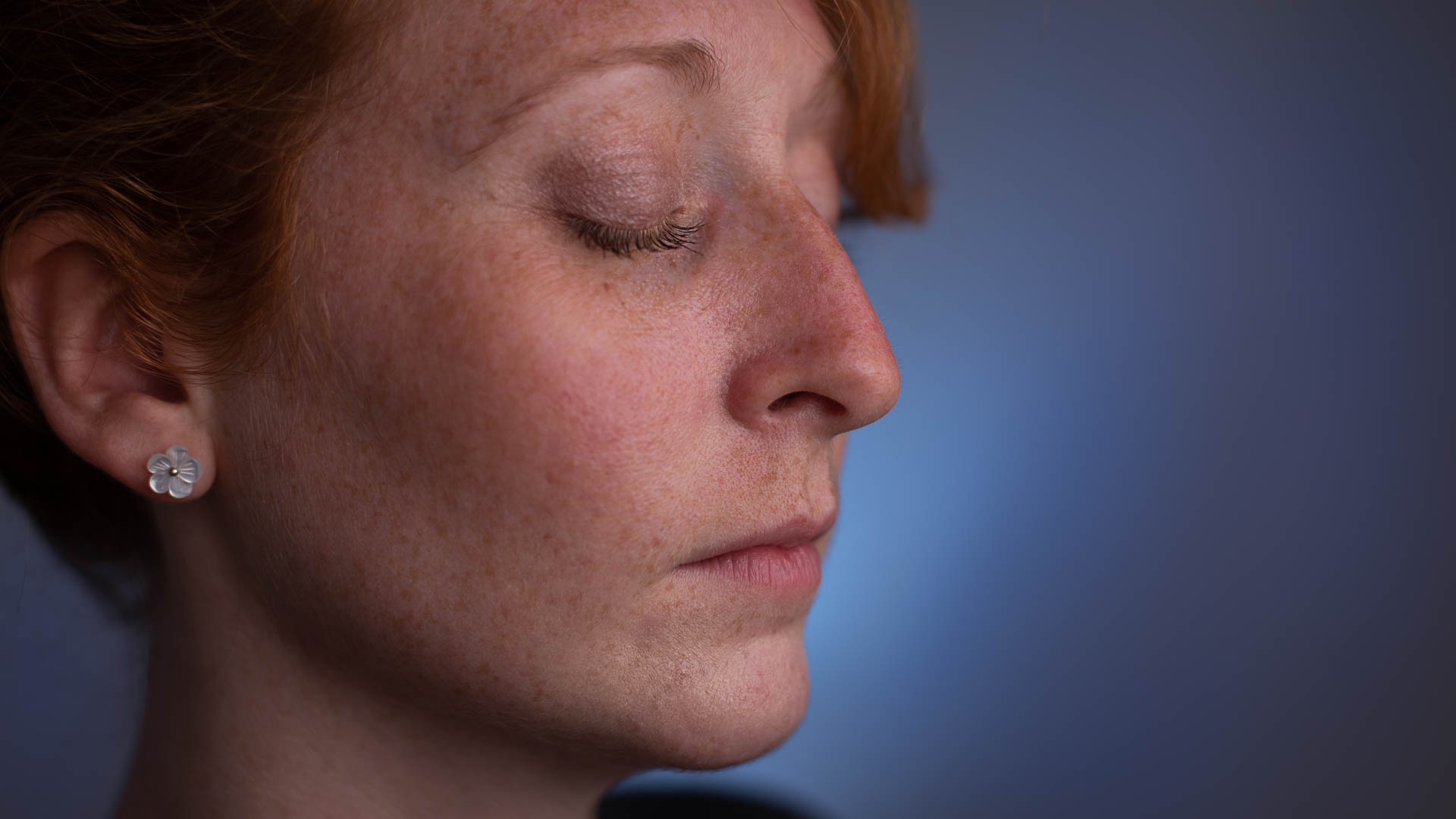
Box breath drops you into your parasympathetic nervous system, your rest and digest function, lowering your blood pressure helping you to relax
Box breath is used to bring more awareness to the length of your breath. It helps to make the in and out breath equal, balancing the body.
Sign up to the T3 newsletter for smarter living straight to your inbox
Get all the latest news, reviews, deals and buying guides on gorgeous tech, home and active products from the T3 experts
You can practise box breath by inhaling slowly to a count of three. At the end of your inhale, hold your breath for a count of three. Then start to breathe out slowly to the same count. Hold your breath at the end of your exhale for a count of three.
Repeat this for a few minutes to help relieve the symptoms of anxiety and calm the mind. You can increase the count as you wish but make sure there is no struggle or strain in your breath. It should feel easy and relaxed.
- Chill out even more with our pick of the best candles
- ... and the best massagers
3. Ujjayi breathing
Ujjayi breath (ooo-jai) is also known as the victorious breath. It's where we make a soft ocean sound at the back of the throat on the inhale and exhale, and it's commonly used in yoga.
To practise this, start with the mouth open. As you exhale, imagine you are fogging up a mirror feeling your throat slightly contract and allowing there to be a noise from the mouth. Then as you inhale through the mouth, try and make the same sound. Do this a few times to get used to the feeling in the throat and the sound.
Once you're feeling confident, close the mouth and breathe through the nostrils still making the sound in the back of the throat. It should sound like the waves of the ocean. Listen to the calming sound as you practise this for a few minutes. Ujjayi breath promotes mental clarity helping to lessen the negative effects of anxious thinking.
- Browse our pick of the best yoga mats
- ... as well as the best yoga blocks and yoga towels
4. Bee breath
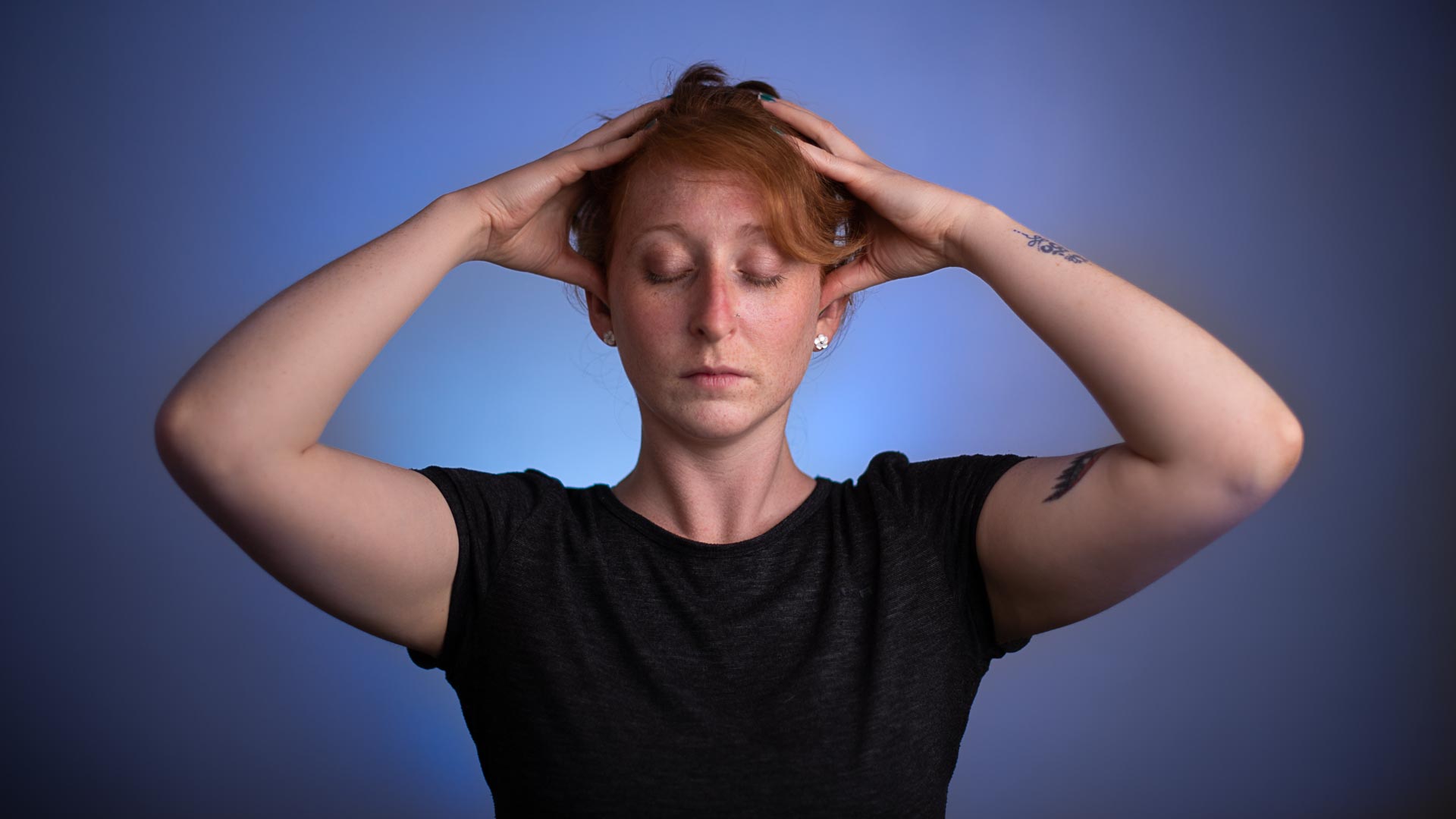
The soothing hum of the bee breath calms the mind helping us to gain some much needed headspace
This breathing technique involves the use of your hands. Placing your thumbs to close your ears and the rest of your fingers lightly onto your scalp. Take a breath in through the nose. As you exhale through the nose, make a noise like the buzzing of a bee. This sound comes from the throat and is similar to the noise we make when we hum.
Allow your exhalation to be as long as possible without strain, sustaining the buzzing sound. When you need to inhale again, do so and repeat the exhale with the buzzing sound. Practise this until you feel your anxiety reducing. To hear how it sounds, watch the video below.
5. Alternate nostril breathing
Alternate nostril breathing helps to balance the left and right side of the brain, bringing the body into equilibrium. This breathing technique involves retaining the breath for a short period after each inhalation. However, you can practise without the retention if this causes you to struggle or feel more anxious.
With your right hand, fold the first two fingers into your palm. You'll be using your thumb and ring finger on the right hand to alternate the breath through the nostrils. Take a breath in and exhale to empty your lungs.
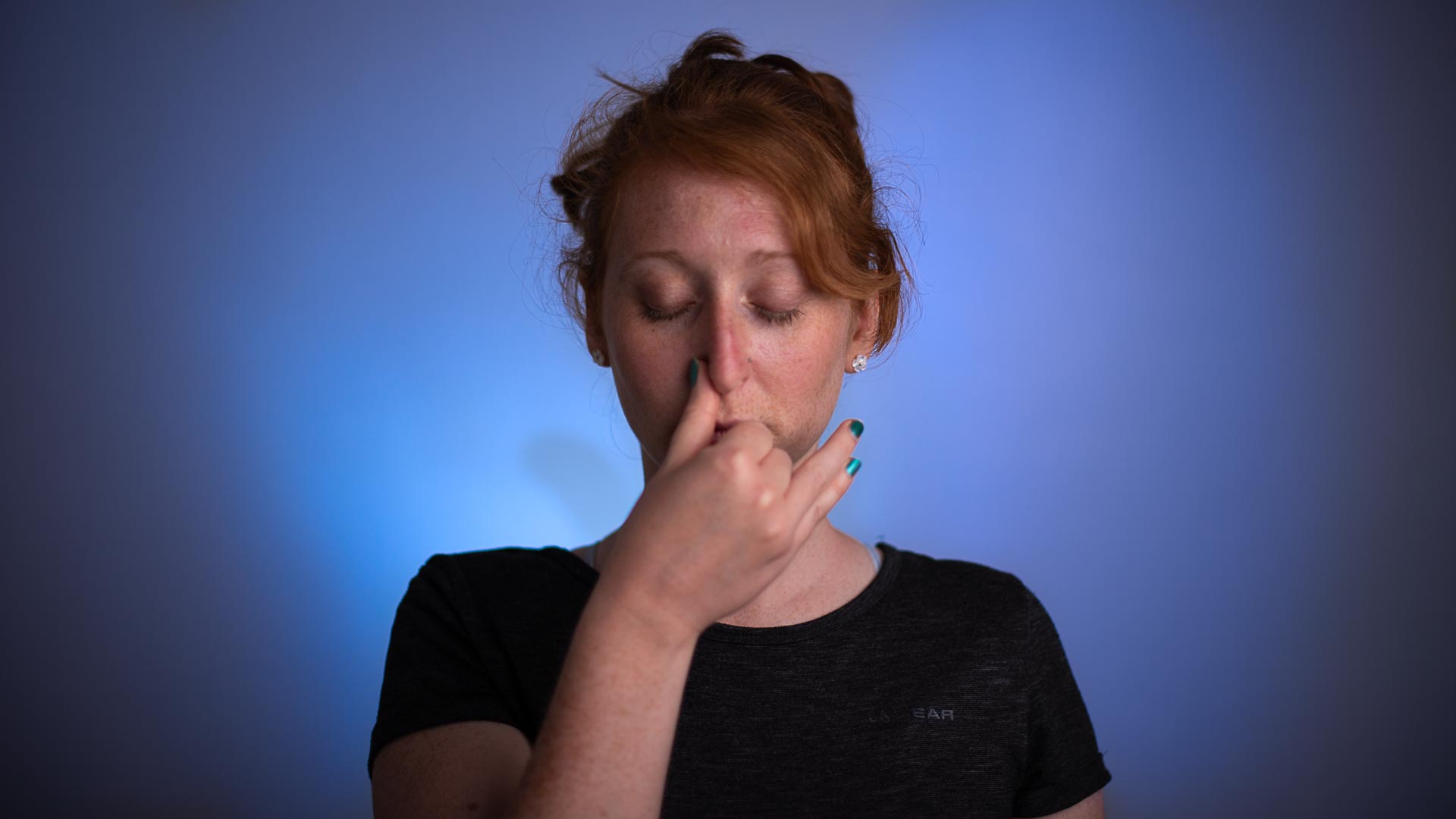
At the end of your exhale, close your right nostril with your right thumb and inhale through the left nostril to a count of 4.
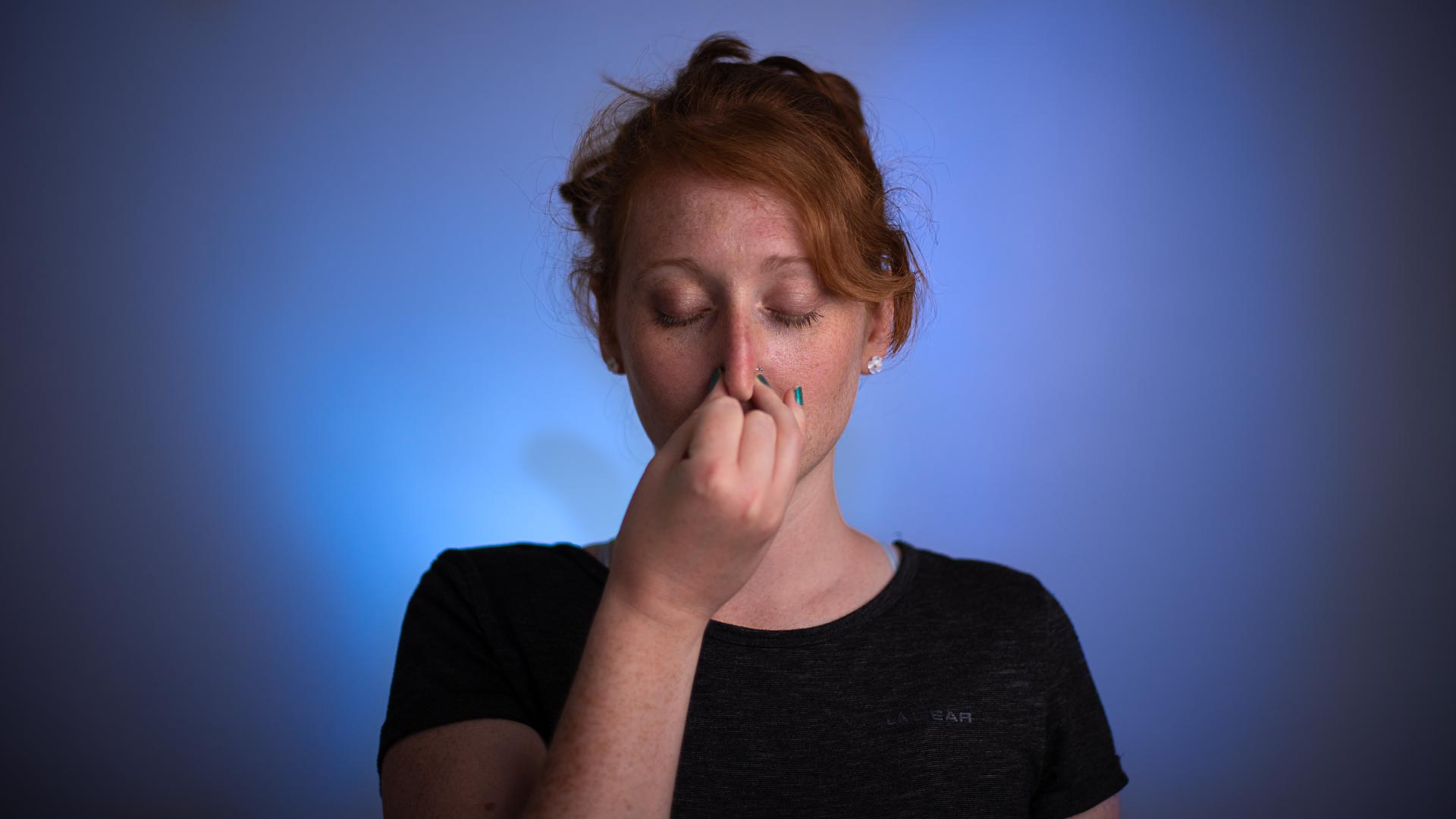
Close both nostrils with your ring finger closing the left nostril and your thumb closing the right. Hold the breath for a count of 8.
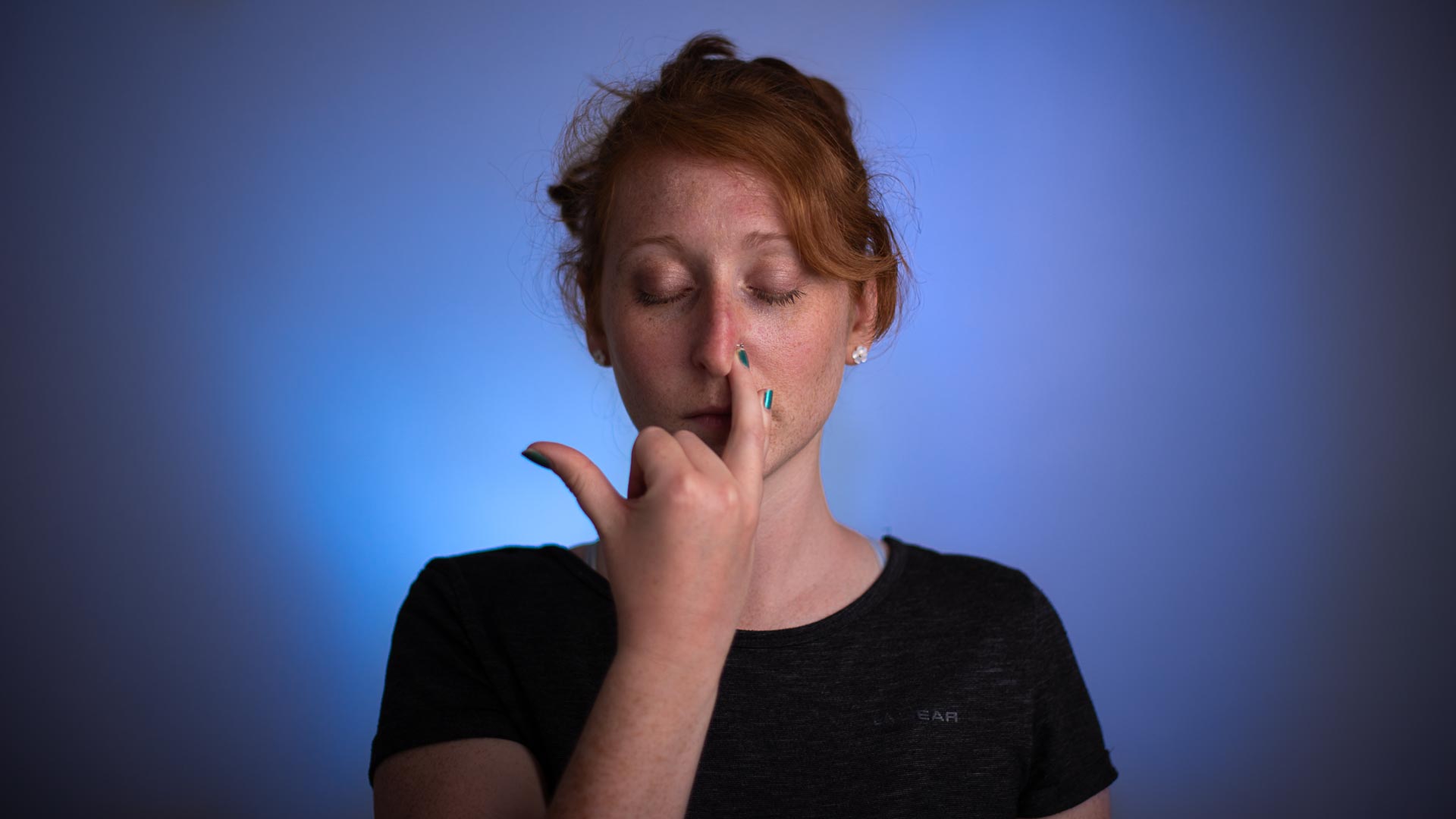
Then release your thumb from your right nostril and exhale for a count of 8 through the right side. Inhale through the right for a count of 4, your ring finger still sealing the left side.
Closing both nostrils, hold the breath for a count of 8. Release your ring finger from the left nostril and exhale through the left for a count of 8.
This is one round. Repeat this flow, alternating the breath for six rounds. You can practise without the retention if that feels more comfortable. If the retention feels easy, you can increase the ratio to 1:4:2 i.e. inhale for 4, hold for 16 and exhale for 8. To see how it looks, watch this video.
Kat has 10 years of yoga teaching experience with further training in supporting injured students. She is qualified to teach Yin Yoga, Hormone Yoga Therapy and more traditional forms of Hatha yoga. She also has a certificate as a Yoga Therapy Practitioner.
-
 How to watch Mario Kart World Direct – everything you need to know about the Switch 2 launch game
How to watch Mario Kart World Direct – everything you need to know about the Switch 2 launch gameNintendo will host a new Nintendo Direct presentation this week, here's how to watch it live and what to expect
By Rik Henderson
-
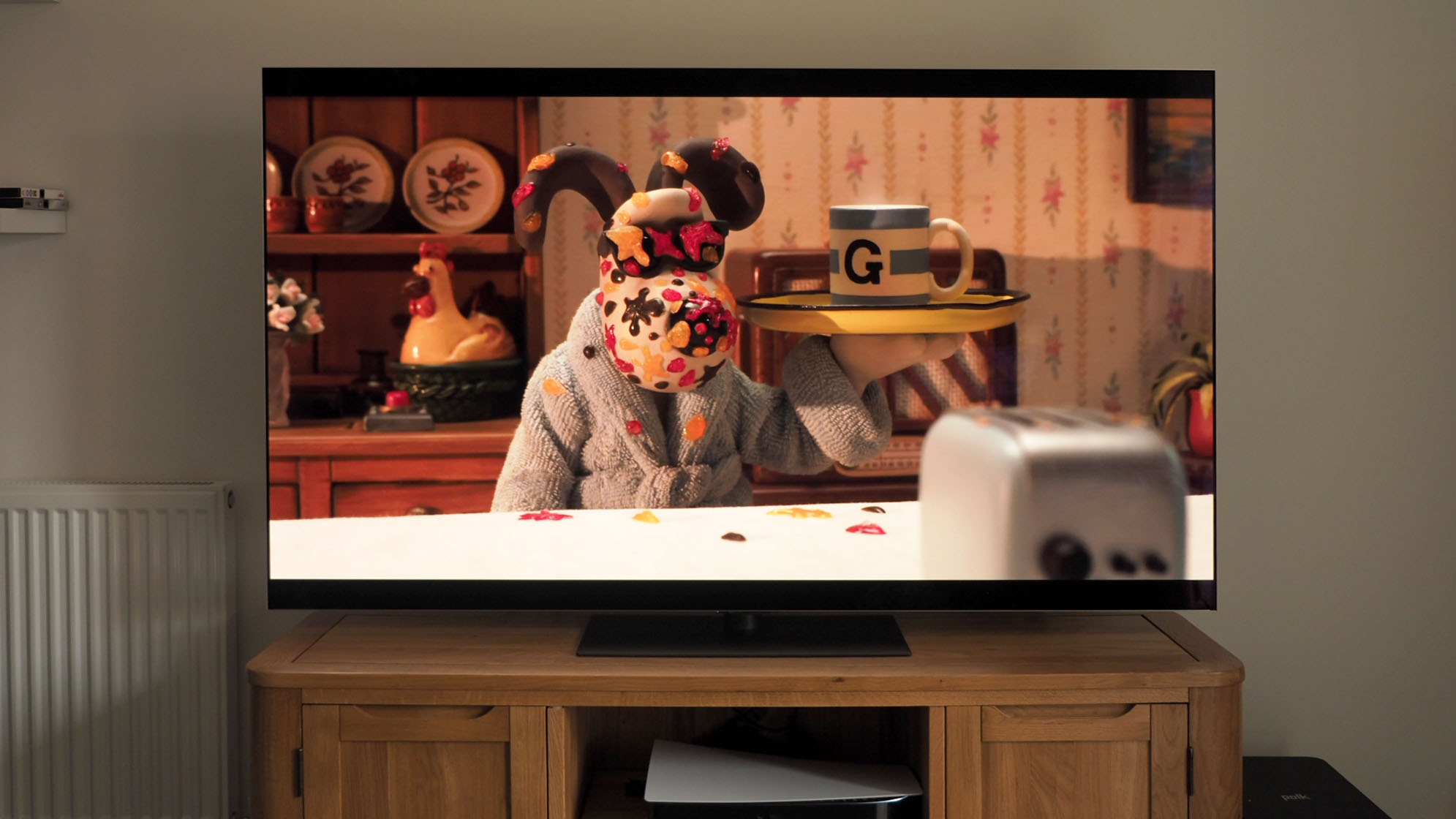 LG OLED G5 review: TV of the year?
LG OLED G5 review: TV of the year?LG's brightest-ever OLED TV is an instant winner – with some AI oddities
By Mike Lowe
-
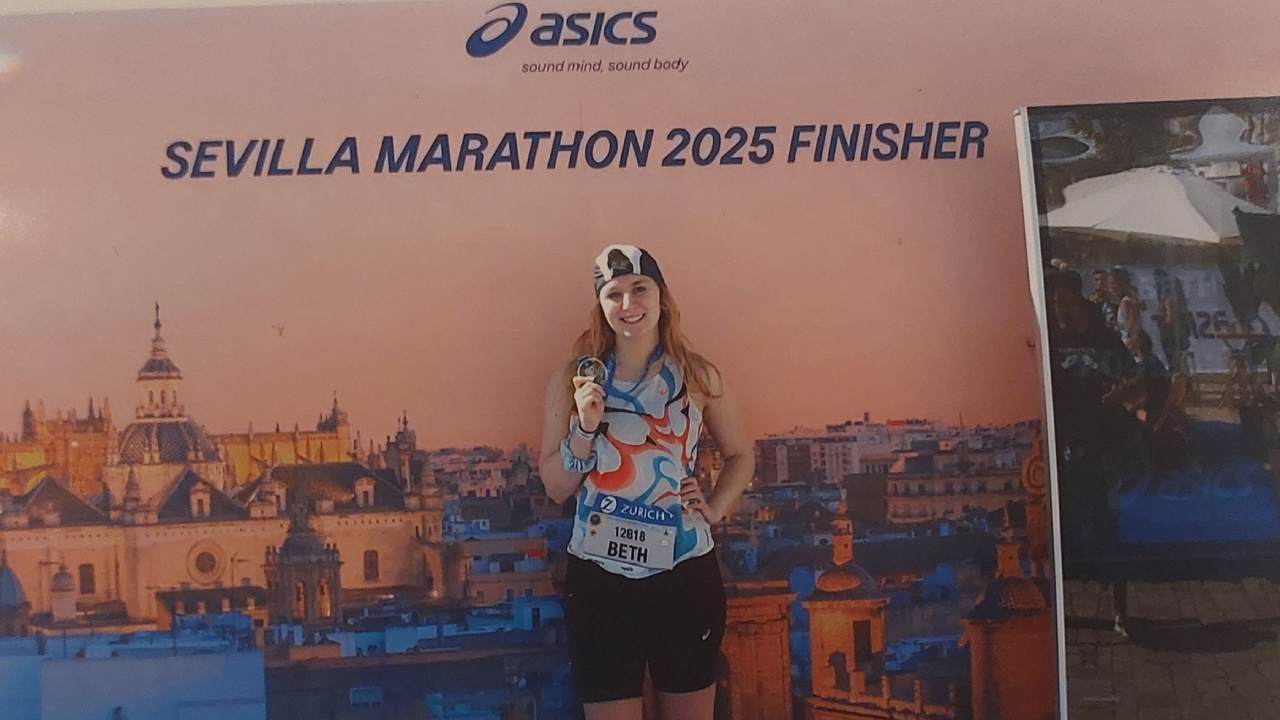 I ran the Seville marathon with ASICS – here’s 5 things I learnt from my first marathon
I ran the Seville marathon with ASICS – here’s 5 things I learnt from my first marathonEverything I learnt from my first marathon
By Bethan Girdler-Maslen
-
 This AI food diary app can tell you the nutritional content of your food – with just one photo
This AI food diary app can tell you the nutritional content of your food – with just one photoOh, and it's free to use!
By Lizzie Wilmot
-
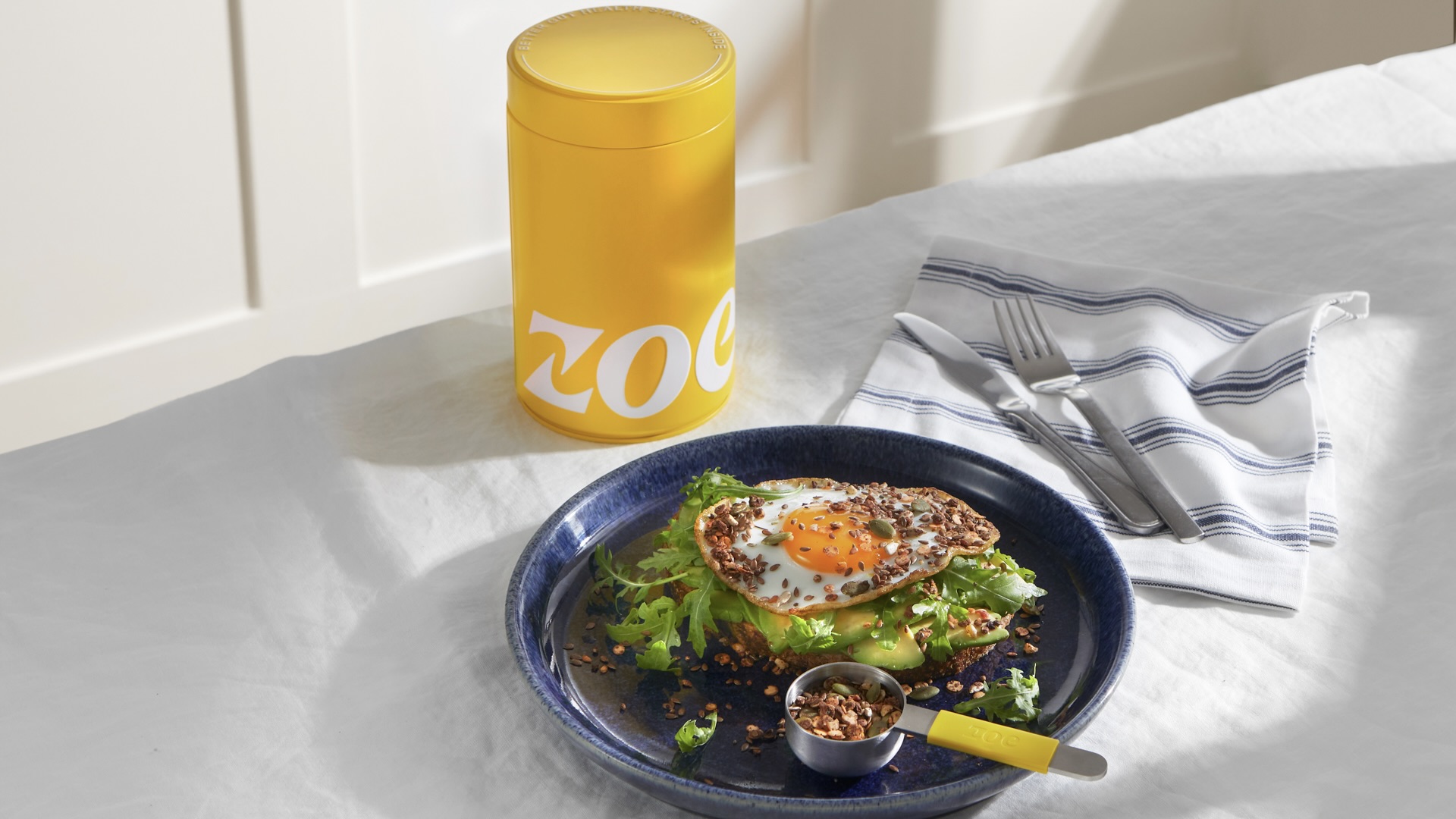 Zoe launches first own-brand supplement on the back of successful nutrition programme
Zoe launches first own-brand supplement on the back of successful nutrition programmeDaily30+ will be available online and in select Waitrose stores later in July
By Lizzie Wilmot
-
 This new wearable monitors your hydration levels and will remind you to drink water
This new wearable monitors your hydration levels and will remind you to drink waterThe world's first real-time hydration monitoring wearable is here
By Lizzie Wilmot
-
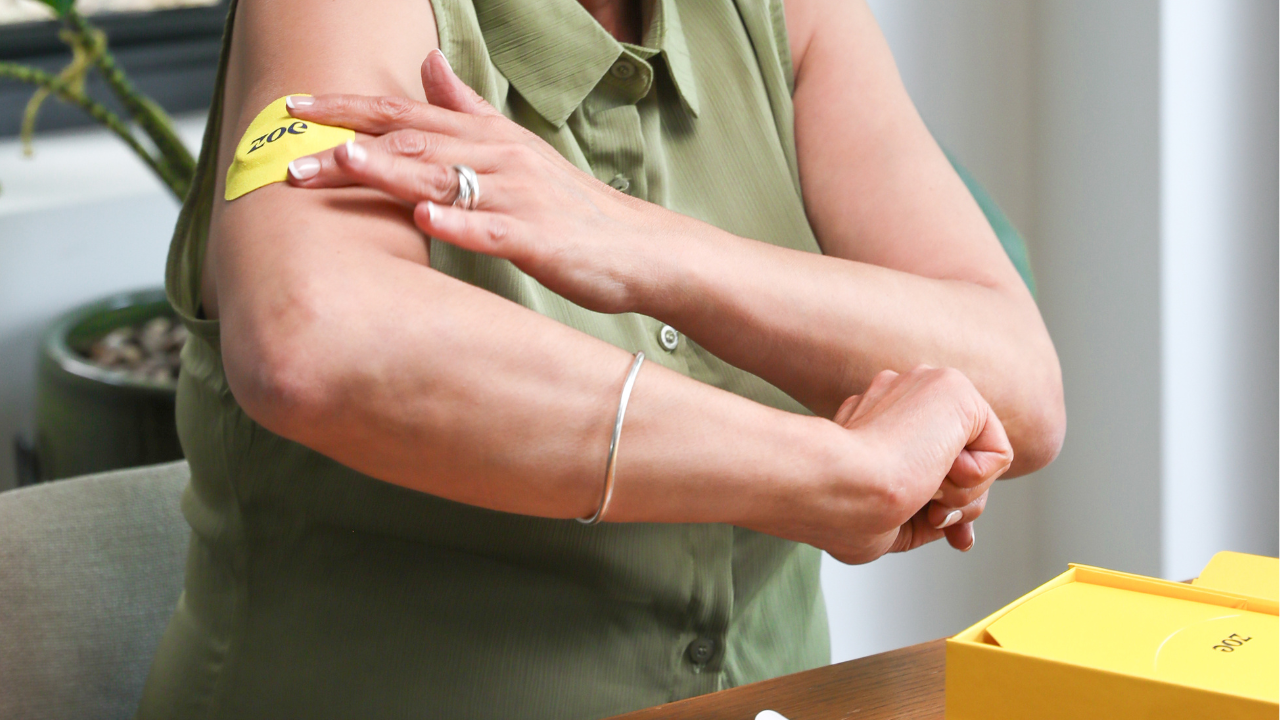 I tried the Zoe nutrition programme – it told me exactly what I was doing wrong
I tried the Zoe nutrition programme – it told me exactly what I was doing wrongIf you haven't heard of the Zoe programme, where have you been?
By Lizzie Wilmot
-
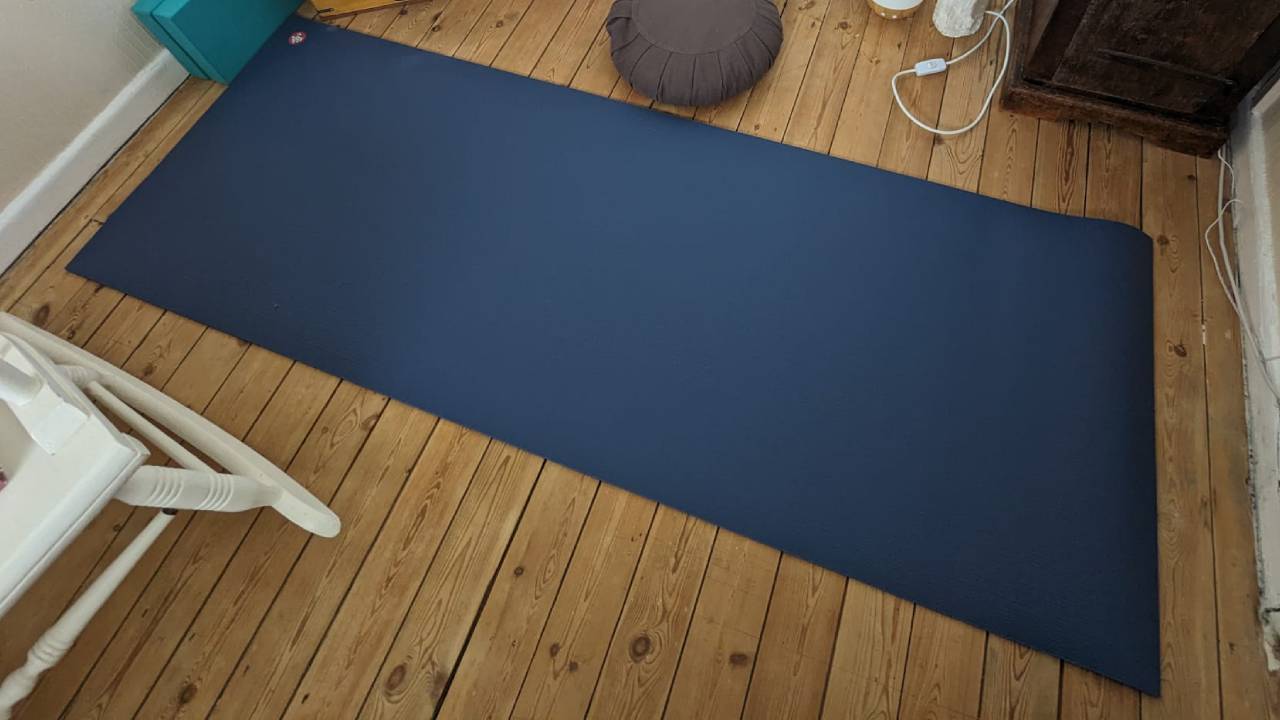 Manduka PRO yoga mat review: luxurious, eco-conscious but could have better grip
Manduka PRO yoga mat review: luxurious, eco-conscious but could have better gripA luxurious top-end yoga mat that's almost perfect, apart from its grip... here's T3's Manduka PRO yoga mat review
By Kat Bayly
-
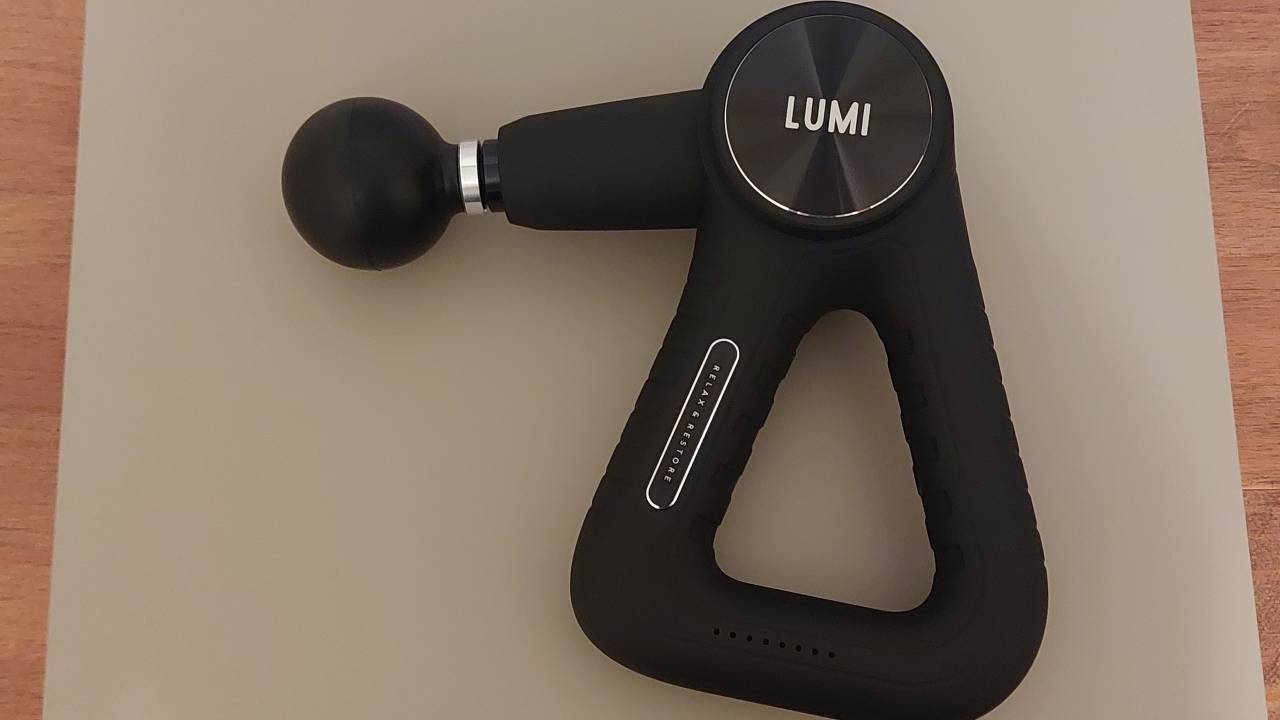 Lumi Therapy powerPRO Massage Gun review: relieves sore muscles in an instant
Lumi Therapy powerPRO Massage Gun review: relieves sore muscles in an instantYour muscles will never feel sore again with the Lumi powerPRO… if you can manage to hold it!
By Bethan Girdler-Maslen
-
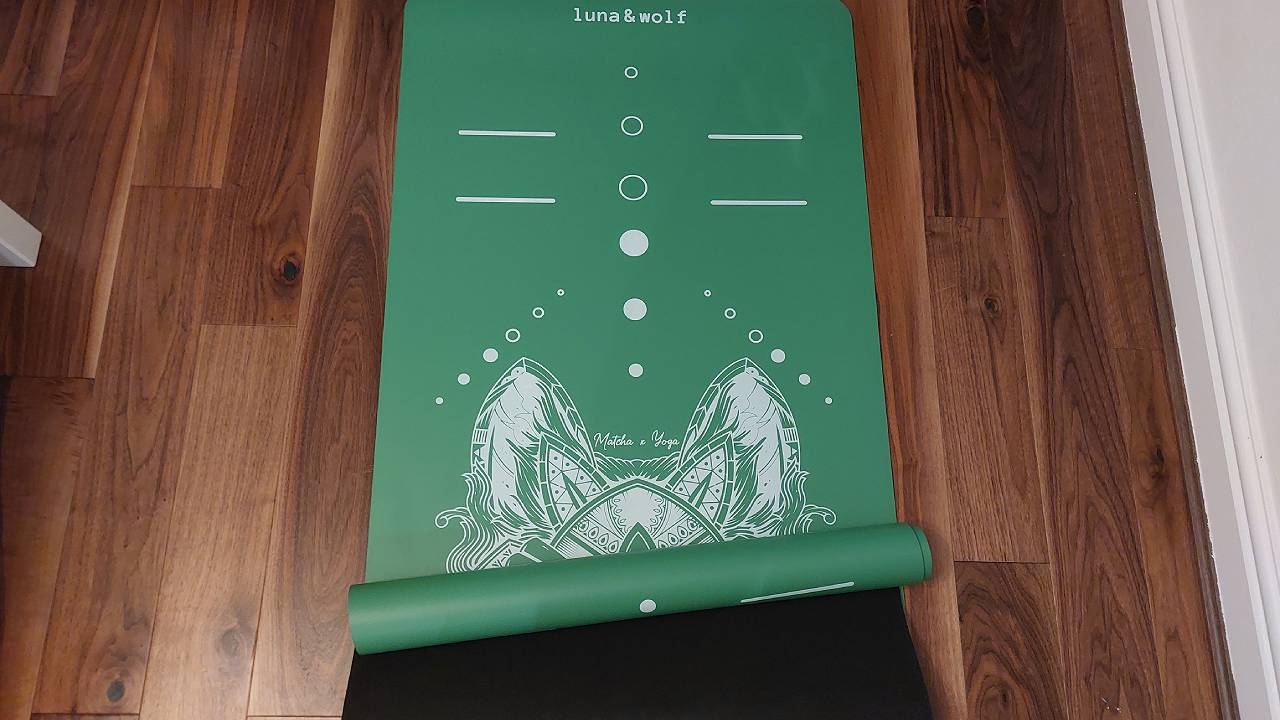 Lumi Therapy Eco Wolf Yoga Mat review: natural, cushioning and sturdy
Lumi Therapy Eco Wolf Yoga Mat review: natural, cushioning and sturdyThe more you sweat, the more the Lumi Therapy Eco Wolf Yoga Mat grips
By Bethan Girdler-Maslen